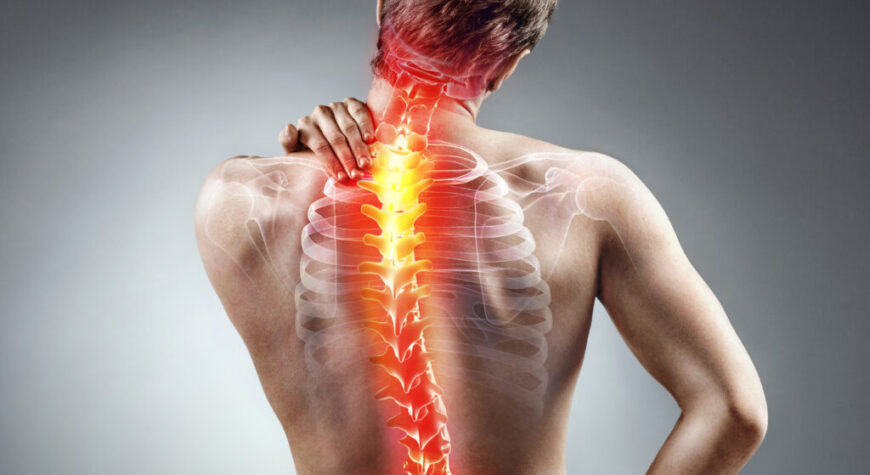Scoliosis and Mental Health: A Physical Therapist’s Perspective on Healing Beyond the Spine

At Synchrony, we’ve worked with many individuals living with scoliosis, and one truth continues to stand out: scoliosis is not just a spinal condition—it profoundly impacts mental and emotional health.
Especially in teenagers and young adults, scoliosis shapes how they see themselves, relate to others, and envision their future. As healthcare professionals, our role must go beyond physical treatment. We must also support the emotional journey that comes with this diagnosis.
Understanding Scoliosis Beyond the Curve
Scoliosis, defined by an abnormal lateral curvature of the spine, can range from mild to severe. While it’s often identified by visible changes in posture or alignment, the internal experience is far deeper.
For many, scoliosis doesn’t just alter their spine—it reshapes their sense of self.
One question we frequently hear is: “Is scoliosis a deformity?” While this term may appear in medical literature, its emotional weight can be crushing—especially for a 14-year-old hearing it for the first time. Words matter. As clinicians, we must choose language that informs without wounding, and that empowers rather than isolates.
The Fear of the Unknown
For most, scoliosis is an unfamiliar term until it becomes personal. Diagnosis often comes with a rush of medical jargon, scans, braces, and sometimes surgery. The uncertainty that follows is a major source of emotional stress:
- What does this mean for my future?
- Will I need surgery?
- Will the pain get worse?
- What can I do to stop the curve?
In today’s digital age, patients often turn to online forums and social media for answers. While these platforms can offer community and education, they also expose teens to worst-case scenarios, heightening anxiety rather than easing it.
Curve Progression Anxiety: When the Mind Overwhelms the Body
For many adolescents with moderate to severe scoliosis (curves over 50 degrees), the spine becomes an obsession. We’ve seen teens track their posture daily—scrutinizing shoulder height, waist symmetry, or rib prominence in photos.
Their world starts revolving around their diagnosis.
This hyper-focus often leads to emotional withdrawal. Sports, academics, even friendships may begin to slip away. The spinal condition, once physical, becomes a psychological struggle—and sometimes, a silent mental health crisis.
Social Anxiety and Body Image
Adolescence is a formative time for self-image—and scoliosis can deeply disrupt that process.
Even in cases where the curve isn’t visibly significant, the fear that others might notice can be overwhelming. Patients often wear oversized clothes, avoid swimming, or shy away from group activities. They may even avoid eye contact, consumed by the thought that someone is noticing their posture.
We must recognize the invisible battles our patients fight. Supporting their emotional well-being is just as important as correcting posture or relieving pain.
The Role of Physical Therapy in Emotional Healing
At Synchrony, our sessions often become more than just physical therapy. They’re safe spaces where patients share their fears, frustrations, and insecurities. This emotional openness is a vital part of healing.
Here’s how we integrate mental wellness into physical rehabilitation:
- Educate with Empathy: Understanding their condition reduces fear.
- Mind-Body Techniques: Incorporate yoga, Pilates, and breathwork to calm the nervous system.
- Track Holistic Progress: Celebrate milestones like returning to school activities, not just curve measurements.
- Encourage Counseling: When signs of anxiety or depression emerge, we refer patients to mental health professionals.
- Involve the Family: Caregivers must understand and validate the emotional side of scoliosis too.
Restoring Confidence, Rebuilding Identity
Scoliosis may be lifelong, but it doesn’t have to define a life.
With the right care—physical, emotional, and social—patients can thrive. One of the most fulfilling aspects of our work is seeing a teen rejoin sports, laugh without self-consciousness, or walk taller—both physically and emotionally.
To every person living with scoliosis:
- You are more than your curve.
- You are strong, worthy, and capable of joy.
- You deserve care that sees and supports all of you.
Shifting the Narrative
It’s time to change how we talk about scoliosis. Let’s move away from a language of deformity and limitation, toward one of strength, adaptation, and resilience.
As therapists, educators, and caregivers, we must treat not just the spine—but the person. Let’s walk beside our patients through every bend and turn, supporting their journey to wholeness.
If you or someone you know is navigating scoliosis and its emotional challenges, reach out to our team. Early support—from a trained clinical team—can make all the difference.
